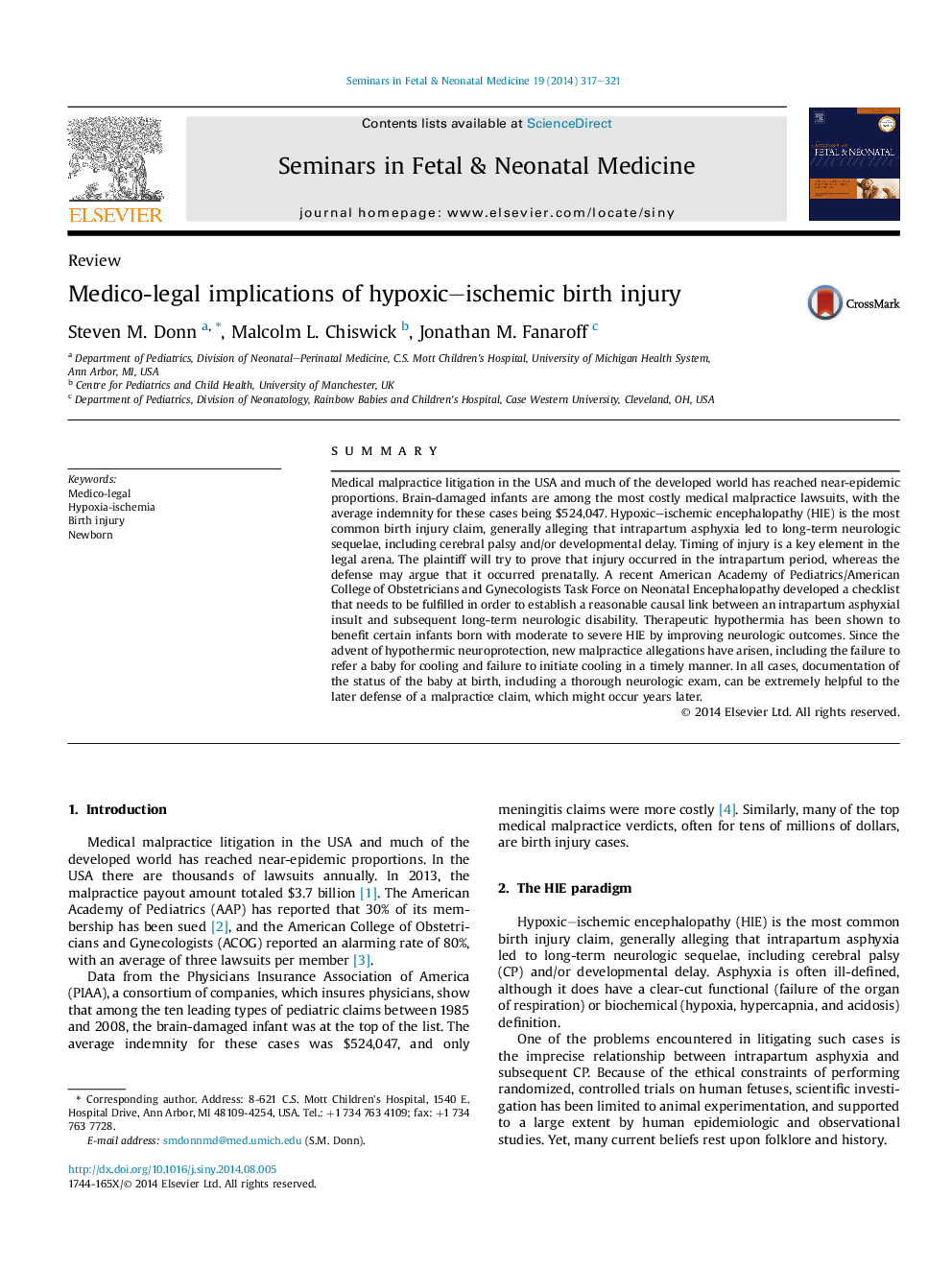| Article ID | Journal | Published Year | Pages | File Type |
|---|---|---|---|---|
| 6189293 | Seminars in Fetal and Neonatal Medicine | 2014 | 5 Pages |
SummaryMedical malpractice litigation in the USA and much of the developed world has reached near-epidemic proportions. Brain-damaged infants are among the most costly medical malpractice lawsuits, with the average indemnity for these cases being $524,047. Hypoxic-ischemic encephalopathy (HIE) is the most common birth injury claim, generally alleging that intrapartum asphyxia led to long-term neurologic sequelae, including cerebral palsy and/or developmental delay. Timing of injury is a key element in the legal arena. The plaintiff will try to prove that injury occurred in the intrapartum period, whereas the defense may argue that it occurred prenatally. A recent American Academy of Pediatrics/American College of Obstetricians and Gynecologists Task Force on Neonatal Encephalopathy developed a checklist that needs to be fulfilled in order to establish a reasonable causal link between an intrapartum asphyxial insult and subsequent long-term neurologic disability. Therapeutic hypothermia has been shown to benefit certain infants born with moderate to severe HIE by improving neurologic outcomes. Since the advent of hypothermic neuroprotection, new malpractice allegations have arisen, including the failure to refer a baby for cooling and failure to initiate cooling in a timely manner. In all cases, documentation of the status of the baby at birth, including a thorough neurologic exam, can be extremely helpful to the later defense of a malpractice claim, which might occur years later.
